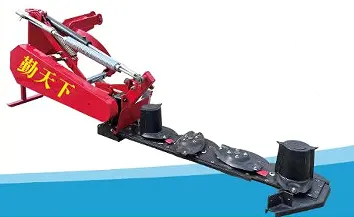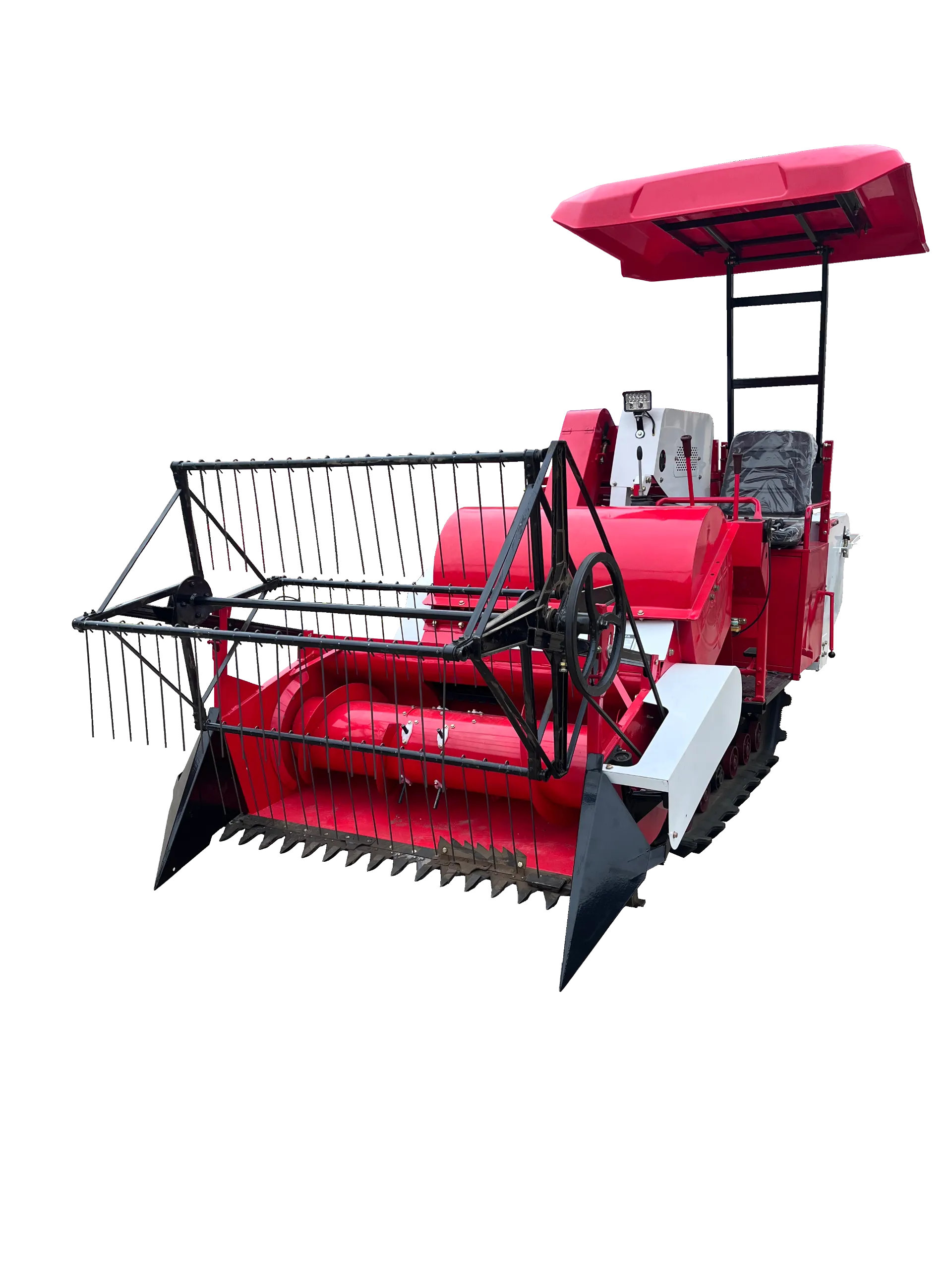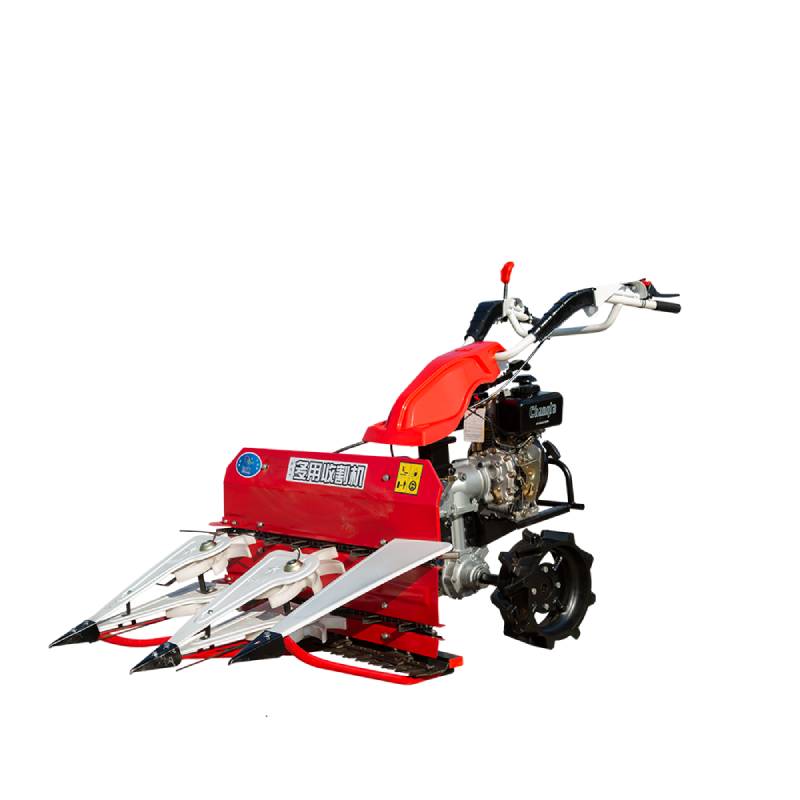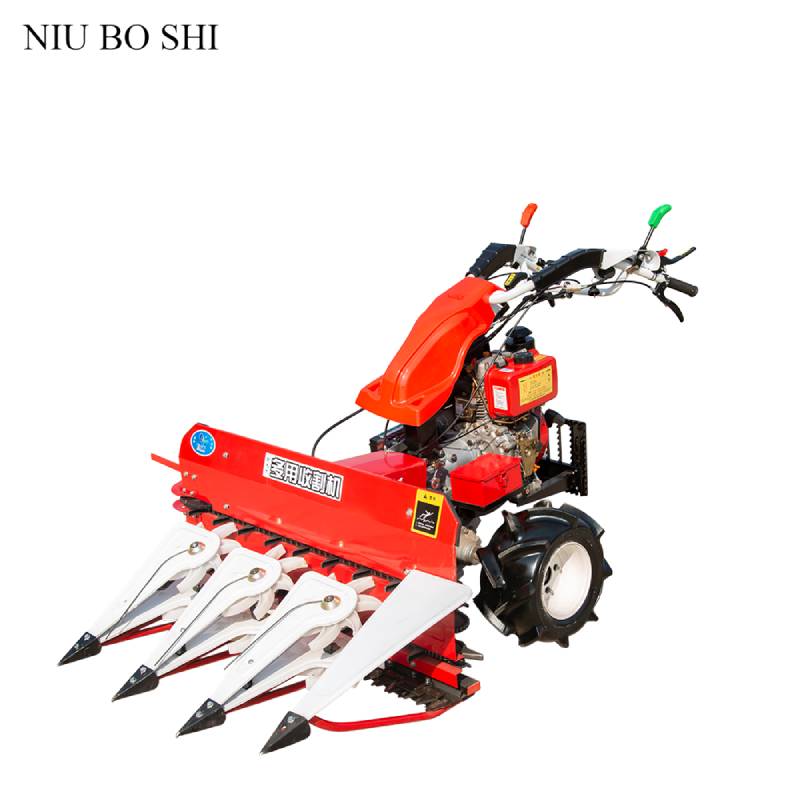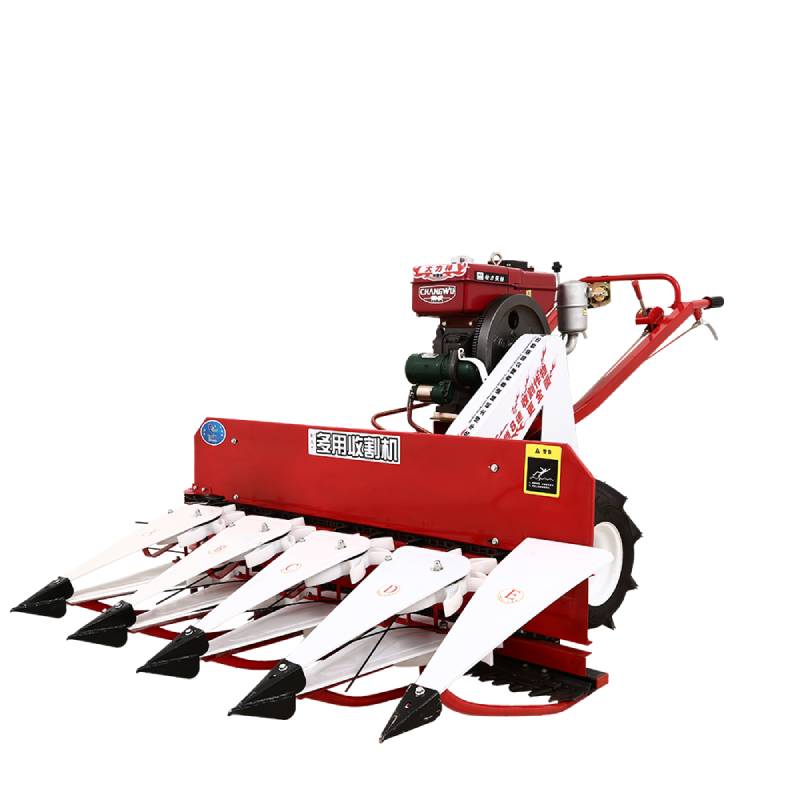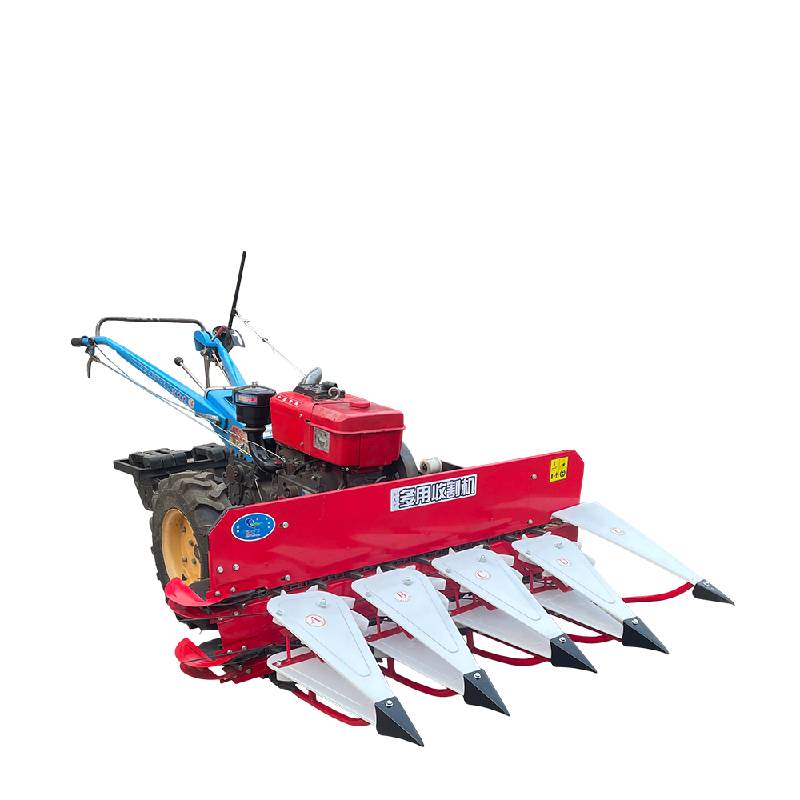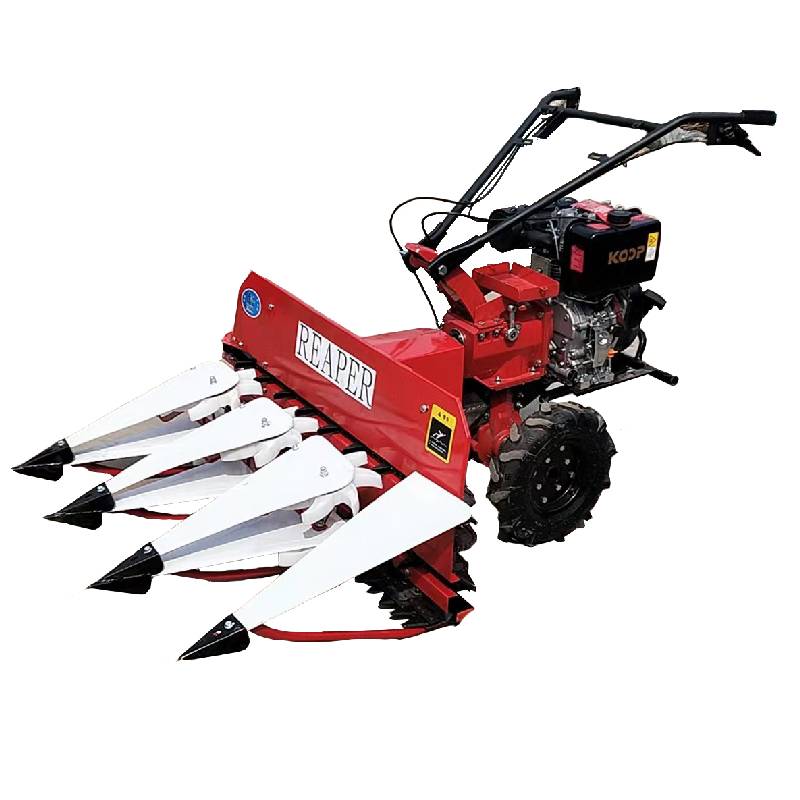Efficient Forage Mower | Hay, Maize & Plot Harvester
Introduction to High-Performance Forage Mowers
In modern agriculture, the efficiency and quality of forage harvesting directly impact livestock nutrition and overall farm productivity. A critical component in this process is the forage mower, a specialized agricultural machine designed to cut and condition various types of forage crops with precision and speed. From small-scale operations to large commercial farms, the demand for robust, reliable, and technologically advanced forage harvesting equipment continues to grow. This comprehensive article delves into the intricacies of forage mower technology, exploring industry trends, manufacturing excellence, detailed specifications, diverse application scenarios, and the profound advantages offered by leading solutions like the Niuboshi Disc Mower. We aim to provide B2B decision-makers and agricultural engineers with the insights necessary to make informed procurement decisions, emphasizing performance, durability, and return on investment.
Industry Trends in Forage Harvesting Technology
The global agricultural machinery market is undergoing significant transformation, driven by demands for increased efficiency, sustainability, and precision farming. Forage harvesting, in particular, is witnessing several key trends:
- Automation and Smart Integration: The integration of GPS guidance, telematics, and sensor technologies allows for optimized cutting paths, real-time yield monitoring, and predictive maintenance. This leads to reduced fuel consumption and improved operational accuracy for forage mower systems.
- Enhanced Efficiency and Speed: Modern forage mowers are designed for higher working widths and increased operating speeds without compromising cut quality. This is crucial for maximizing productivity during critical harvest windows.
- Sustainability and Resource Optimization: Manufacturers are focusing on reducing environmental impact through more fuel-efficient engines, lighter yet stronger materials, and designs that minimize soil compaction. Technologies for efficient crop conditioning also reduce drying time, saving energy.
- Versatility and Modularity: Farmers seek equipment that can adapt to various crop types (e.g., alfalfa, clover, grasses) and field conditions. Modular designs allow for easy attachment and detachment of components, enhancing multi-season utility for machines like the forage plot harvester or hay harvester.
- Durability and Extended Service Life: With rising equipment costs, there's a premium on machinery built with high-quality, wear-resistant materials and precision manufacturing, ensuring a longer operational lifespan and reduced downtime.
These trends collectively push the industry towards more sophisticated, durable, and economically viable solutions, making the choice of a reliable forage mower a strategic investment for any agricultural enterprise.
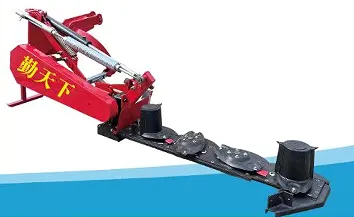
Modern forage mower in action, demonstrating efficiency in field operation.
Precision Manufacturing Process of Forage Mowers
The production of a high-performance forage mower involves a multi-stage, meticulously controlled manufacturing process, ensuring both robust construction and precision functionality. Adherence to international standards like ISO 9001 and ANSI specifications is paramount throughout.
Key Process Flow Steps:
- Material Selection & Preparation: High-grade alloy steels (e.g., structural steel S355, wear-resistant steel Hardox for blades) are selected for critical components, offering superior strength and longevity. Raw materials undergo rigorous inspection for metallurgical composition and structural integrity.
-
Component Manufacturing:
- Casting: Components like gearboxes and housings often utilize precision casting processes, followed by heat treatment to achieve desired hardness and ductility.
- Forging: Blades and other high-stress parts are frequently forged to enhance grain structure and mechanical properties, providing exceptional resistance to impact and abrasion.
- CNC Machining: Critical components such as shafts, gears, and cutting discs undergo CNC machining for micron-level precision, ensuring perfect alignment and smooth operation. This minimizes vibration and extends service life.
- Welding: Robotic welding techniques are employed for consistent, high-strength welds on frame structures, ensuring the overall rigidity and durability of the machine.
- Surface Treatment: Components receive protective coatings such as powder coating or anti-corrosion paints. This step is vital for ensuring excellent corrosion resistance, especially given the exposure to harsh outdoor environments and crop residues.
- Assembly: Skilled technicians assemble the various modules, adhering to strict assembly protocols. Each sub-assembly, like the cutter bar and drive system, is individually tested before final integration.
-
Quality Control & Testing:
- Dynamic Balancing: Cutting discs and rotating parts are dynamically balanced to minimize vibration, reduce wear, and enhance operational safety.
- Functional Testing: Every completed forage mower undergoes a series of functional tests, including power take-off (PTO) compatibility, cutting mechanism operation, and hydraulic system checks.
- Durability Simulation: Prototype units often undergo accelerated aging tests to simulate years of field use, providing data for continuous improvement.
- Final Inspection & Certification: Before shipment, each machine passes a final inspection for aesthetic quality, completeness, and documentation. Compliance with CE standards and other regional certifications is verified.
This stringent process ensures a service life often exceeding 10,000 operational hours under typical conditions, providing substantial ROI for agricultural ventures. The robust construction and emphasis on corrosion resistance derived from these processes directly contribute to the longevity and minimal maintenance requirements of the equipment.
Technical Specifications: Niuboshi Disc Mower
The Niuboshi Disc Mower exemplifies precision engineering and robust construction in the forage mower category. Designed for optimal performance and durability, its specifications are tailored to meet the demanding needs of modern agriculture, ensuring efficient and clean cuts across various forage crops.
| Parameter | Value/Description |
|---|---|
| Model | Niuboshi Disc Mower (Various models based on working width) |
| Working Width | 1.3m to 3.2m (e.g., 1.7m, 2.1m, 2.8m common variants) |
| Number of Discs | 4 to 8 discs, depending on working width |
| Blades Per Disc | 2 freely rotating blades, ensuring clean cut and stone protection |
| Required Tractor Power | 30 HP - 80 HP (depending on mower size and conditions) |
| PTO Speed | 540 rpm (standard) |
| Cutting Height | Adjustable, typically 30-100 mm |
| Overall Dimensions (Approx.) | Varies by model, e.g., 2000x1200x1100 mm (for 1.7m model) |
| Weight (Approx.) | 350 kg to 800 kg |
| Drive System | Gear-driven (robust and reliable) |
| Material | High-strength alloy steel for frame, heat-treated steel for blades |
| Safety Features | Overrun clutch, stone guard, robust safety covers |
These specifications highlight the robust design and engineering focus on efficiency and longevity. The gear-driven system, as opposed to belt drives, ensures higher power transmission efficiency and reduced maintenance. High-strength materials and precision machining contribute to the overall durability, making the Niuboshi Disc Mower a reliable partner for intensive agricultural use.
Application Scenarios of Forage Mowers
The versatility of a well-engineered forage mower allows its deployment across a broad spectrum of agricultural applications, directly impacting feed quality and operational economics.
- Hay Production: The primary application involves cutting various grasses and legumes for haymaking. A clean and even cut by a disc mower facilitates faster drying and better preservation of nutritional value. This is where a hay harvester truly shines.
- Silage Production: Forage mowers are essential for cutting crops like alfalfa, clover, and specific grass varieties destined for silage. The precision cutting minimizes soil contamination and optimizes chop length for efficient fermentation.
- Green Feed Harvesting: Directly providing fresh forage to livestock. The ability to cut dense crops efficiently ensures a consistent supply of highly digestible feed.
- Forage Plot Management: In agricultural research or specialized seed production, precise cutting of forage plot harvester ensures accurate yield measurements and quality control.
- Biomass Production: Certain agricultural residues or dedicated energy crops can be harvested by forage mowers for biomass energy generation.
- Maize and Cereal Harvesting: While specialized maize harvester machine or mini maize harvester machine exist, robust disc mowers can, in some scenarios, pre-cut or clear fields of stalk residues, preparing for subsequent passes or land preparation.
In diverse environments, from flat plains to moderately hilly terrains, modern forage mowers with appropriate suspension systems can maintain consistent ground contact, ensuring a uniform stubble height and preventing scalping. This adaptability is crucial for maximizing yield and maintaining field health.

Versatile forage mower adapting to different field conditions for optimal harvest.
Technical Advantages of Advanced Forage Mowers
Investing in a modern forage mower offers several significant technical advantages that translate directly into operational efficiencies and economic benefits for agricultural businesses.
- Superior Cutting Quality: Disc mowers provide a clean, scissor-like cut, minimizing crop damage and leaving a consistent stubble height. This promotes rapid regrowth and improves forage quality.
- High Operating Speed and Efficiency: Designed for high PTO speeds and wide working widths, these mowers cover large areas quickly, essential during narrow harvesting windows. Their robust design reduces downtime for maintenance.
- Exceptional Durability and Reliability: Utilizing high-strength, heat-treated steel for blades, robust gearboxes, and reinforced frames ensures maximum resistance to wear, impact, and fatigue. This leads to a significantly extended service life and lower total cost of ownership.
- Reduced Power Consumption: Optimized cutting mechanisms and efficient power transfer systems contribute to lower fuel consumption per acre. For example, direct gear drives in Niuboshi mowers minimize energy loss compared to less efficient belt-driven systems.
- Enhanced Safety Features: Modern designs incorporate essential safety features such as breakaway systems to protect against obstacles, PTO shaft guards, and safety curtains, minimizing operational risks.
- Corrosion Resistance: High-quality paint finishes and surface treatments provide excellent protection against rust and corrosion, extending the machine's lifespan in moist agricultural environments.
- Low Maintenance Requirements: Features like sealed gearboxes, self-lubricating components, and easily replaceable wear parts contribute to reduced maintenance time and costs.
These advantages collectively contribute to a higher quality forage yield, reduced operational costs, and increased productivity, making advanced forage mowers an indispensable asset for modern farming operations.
Vendor Comparison: Choosing the Right Forage Mower
Selecting the ideal forage mower involves a comprehensive evaluation of technical features, support, and value across different manufacturers. Here’s a comparative look at key differentiators, with Niuboshi positioned against typical market offerings.
| Feature | Niuboshi Disc Mower | Competitor A (Entry-Level) | Competitor B (Premium Brand) |
|---|---|---|---|
| Drive System | Robust Gear Drive | Belt Drive (some models) | Gear Drive |
| Blade Material | Heat-treated Boron Steel | Standard Carbon Steel | High-grade Alloy Steel |
| Breakaway System | Standard (Spring-loaded) | Optional/Basic | Advanced Hydraulic |
| Service Life Expectancy | ~10,000+ hours | ~5,000-7,000 hours | ~12,000+ hours |
| Corrosion Protection | Multi-layer Powder Coat | Standard Paint | Enhanced Galvanization/Paint |
| Price Point | Mid-Range (High Value) | Low-Range | High-Range |
| Parts Availability | Good (via dealer network) | Variable | Excellent (extensive network) |
Niuboshi aims to strike an optimal balance between premium features and competitive pricing, offering robust gear-driven systems and high-quality materials that often surpass entry-level options while providing a cost-effective alternative to top-tier brands without significant compromise on critical performance metrics. Our long-term focus on durability and user experience positions us as a strong contender in the market.
Customized Solutions for Diverse Agricultural Needs
Recognizing that every farm operation has unique requirements, Niuboshi offers tailored solutions for its forage mower range. Our engineering team works closely with clients to configure machines that perfectly match their specific operational contexts.
- Working Width Adjustments: While standard models range, custom configurations for narrower or wider working widths can be developed to optimize for field size and tractor capabilities.
- Conditioner Options: For specific forage types, various conditioner types (e.g., flail, roller) can be integrated or adapted to accelerate drying time and preserve nutrient content.
- Hydraulic System Integration: Custom hydraulic connections and controls can be designed to seamlessly integrate with a client's existing tractor fleet, ensuring optimal functionality and ease of use.
- Material Upgrades: For operations in extremely abrasive conditions, specific components can be manufactured from even higher-grade wear-resistant materials, extending service intervals.
- Safety Feature Enhancements: Depending on regional regulations or specific client safety protocols, additional guards, lighting, or emergency stop systems can be incorporated.
- Color and Branding: For large-scale clients or distributors, machines can be customized with specific color schemes and branding elements.
Our approach emphasizes direct consultation, detailed engineering analysis, and iterative design to ensure the final product delivers maximum utility and efficiency. This client-centric model allows Niuboshi to deliver not just machinery, but complete harvesting solutions.
Application Case Studies
Real-world deployments demonstrate the tangible benefits of Niuboshi forage mower technology. Our commitment to quality and performance has yielded positive outcomes across diverse agricultural settings.
Case Study 1: Large-Scale Dairy Farm in the Midwest, USA
Client: "Green Pastures Dairy," managing 1,500 acres of alfalfa and grass silage.
Challenge: The farm faced increasing operational costs and reduced forage quality due to aging, inefficient mowers requiring frequent maintenance and causing uneven cuts.
Solution: Green Pastures invested in two Niuboshi Disc Mowers (3.2m working width models). The robust gear drive and hardened blades offered a more reliable and precise cut.
Results:
- Efficiency Boost: Reduced harvesting time by 25% due to higher working speed and fewer breakdowns.
- Forage Quality Improvement: Uniform cutting height led to better regrowth and an observed 8% increase in crude protein content in harvested silage.
- Cost Savings: Annual maintenance costs for the mowers decreased by 40%, and fuel consumption per acre dropped by 15%.
Case Study 2: Contract Farming Operation in Europe
Client: "Agro-Harvest Solutions," a contractor serving multiple smaller farms with diverse forage types.
Challenge: Needed a highly versatile and durable hay harvester that could handle various crop densities and field conditions across different client properties, minimizing downtime during peak season.
Solution: Agro-Harvest procured a customized Niuboshi Disc Mower with an integrated flail conditioner and a robust breakaway system.
Results:
- Adaptability: Successfully harvested dense grass for hay, clover for silage, and even some light cover crops with consistent performance.
- Reliability: The breakaway system significantly reduced damage from hidden obstacles, maintaining uninterrupted service during critical periods. The contractor reported 98% uptime during the first season.
- Customer Satisfaction: Client farms reported quicker service and higher quality forage, leading to increased contract renewals for Agro-Harvest.

Niuboshi forage mower delivering consistent performance for demanding agricultural applications.
Frequently Asked Questions (FAQ)
A: We recommend daily checks for blade condition and tightness, lubrication of grease points every 8-10 hours of operation, and a comprehensive inspection of the gearbox oil level, drive shaft, and hydraulic lines after every 50 hours or seasonally. A full annual service is advisable before the primary cutting season.
A: Yes, our disc mowers are designed with a robust suspension system and a standard spring-loaded breakaway system, allowing the cutter bar to pivot backward and upward upon impact with obstacles, minimizing damage. However, extreme rocky conditions should be approached with caution, and pre-field inspection is always recommended.
A: The Niuboshi Disc Mower is highly versatile and ideal for cutting a wide range of forage crops, including alfalfa, various types of grasses (rye, orchard, fescue), clover, and mixed forage stands. Its clean cutting action is beneficial for promoting healthy regrowth across these crops.
A: Niuboshi maintains a comprehensive inventory of genuine spare parts for all our forage mowers. Through our established dealer network and direct customer service, we ensure prompt availability and delivery of essential components, minimizing downtime for our clients.
Lead Time, Warranty, and Customer Support
Lead Time & Fulfillment
Standard Niuboshi Disc Mower models typically have a lead time of 4-6 weeks from order confirmation to shipment, depending on current production schedules and customization requirements. For urgent orders or large volume requests, please contact our sales team for expedited options and precise fulfillment timelines. We operate a streamlined logistics network to ensure timely and secure delivery worldwide.
Warranty Commitments
Niuboshi provides a standard 12-month manufacturer's warranty on all new forage mower units, covering defects in materials and workmanship under normal operating conditions. Extended warranty options are available upon request. Our commitment is backed by adherence to ISO 9001 quality management systems, ensuring reliable and durable products.
Customer Support
Our dedicated customer support team is available to assist with technical queries, parts ordering, and operational guidance. We offer multi-channel support including phone, email, and a comprehensive online knowledge base. Our network of certified service technicians and authorized dealerships provides local support, ensuring prompt and expert assistance whenever needed. We pride ourselves on building long-term relationships through exceptional after-sales service.
Conclusion
The modern forage mower is a cornerstone of efficient and productive livestock farming. Through rigorous engineering, adherence to international quality standards, and a focus on operational benefits, Niuboshi delivers disc mowers that stand at the forefront of agricultural technology. Our solutions, including the Niuboshi Disc Mower, are designed to offer unparalleled durability, cutting precision, and cost-effectiveness, ensuring maximum return on investment for our global clientele. As the agricultural landscape continues to evolve, Niuboshi remains committed to innovation and excellence, providing the tools necessary for sustainable and profitable forage harvesting.
References
- FAOSTAT, Food and Agriculture Organization of the United Nations. Agricultural Production Statistics.
- ASABE Standards, American Society of Agricultural and Biological Engineers. ANSI/ASABE S209.13: Agricultural Tractor and Implement Power Take-Off Drive Specifications.
- USDA National Agricultural Statistics Service (NASS). Crop Production and Farm Income Data.
- ISO 9001:2015, Quality management systems — Requirements. International Organization for Standardization.
Latest news
-
cane-harvester-that-versatile-agricultural-harvesting-solutions-from-hebei-niuboshiNewsAug.22,2025
-
wheat-harvester-that-advanced-crop-harvesting-solutions-from-hebei-niuboshiNewsAug.22,2025
-
combine-harvester-small-that-revolutionizing-agriculture-with-compact-harvesting-solutionsNewsAug.22,2025
-
forage-harvester-that-efficient-machinery-for-animal-feed-productionNewsAug.22,2025
-
rice-reaper-machine-that-comprehensive-harvesting-solutions-for-global-agricultureNewsAug.22,2025
-
When to Upgrade Your Old Forage HarvesterNewsJun.05,2025

